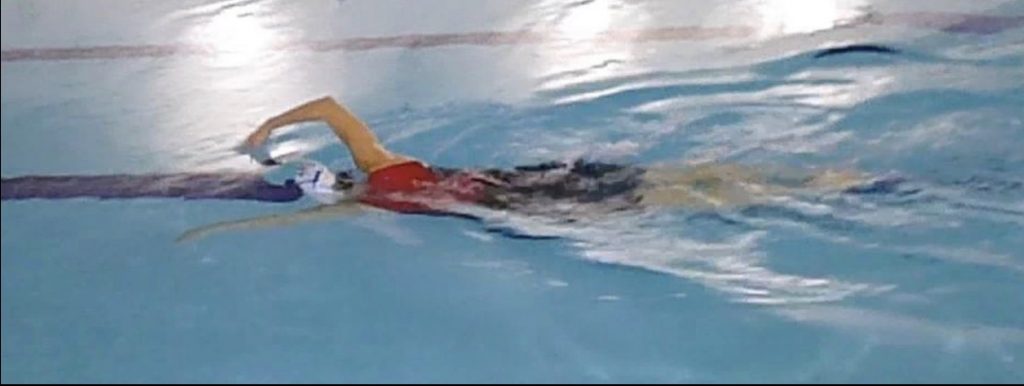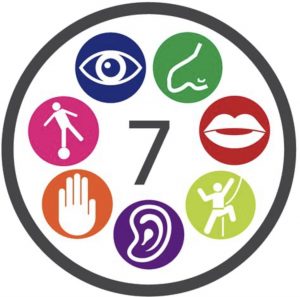Swimming Sensations
Swimming is a sensory rich activity; near naked as we immerse ourselves in water, there is much to discover by tuning into your senses that will both heighten your awareness as a swimmer and make your time in the water more enjoyable.
Our senses play a vital role in our body awareness; the vestibular system explains the perception of our body in relation to gravity, movement and balance and our proprioception makes us aware of the relative position of body parts and our strength of effort being employed in movement. These systems and senses are vital for us to know where we are in space and to plan movements with precision and both play an important role in balance, co-ordination and posture. This sense of space becomes more challenging in water when we are no longer vertical, lying horizontal and rotating around our spine on a medium that supports us, but unlike the ground is not stable but moves and swirls around us.
Evolution has determined our forwards’ vision, great for depth perception, hunting and watching the world around us as we turn our head and body. While evolution and vertical balance determine forwards sight, in swimming any unnecessary lift of the head to directly look forwards will cause balance issues. Our head needs to remain still and stable to maintain our balance, posture and alignment throughout all four strokes and as we require breath the head must move with the body and not independently of it. The instinctive desire to lift the head and look forwards can be overwhelming.
At some point I will ask a swimmer to close their eyes for a moment, not think but to feel and listen to what is going on around them as they swim.
Closing your eyes and taking away the sense of sight, heightens the other senses and allows you to become more aware of how your body feels and moves, the feel of your head as it is cushioned on the water, the length of your spine, the weight shift, the firing of your gluteus as you catch and rotate.

Improving your proprioception can bring a greater awareness of your body positioning, for example the exact location of your lead arm as you rotate compared to being flat, any splaying of your legs as they respond to instability or a relaxing of your posture.
The feel of the water and pressure on your forearms, shins and feet; is the pressure equal and is it returned on your face as you move forwards? This gives you the opportunity to learn about the effort you exert and the forward movement that effort gives you in return.
By closing your eyes you may hear more clearly the sounds of the splash and turbulence that you create as you swim, the sound of deceleration during your stroke cycle will identify moments where you slow down and the sound patterns and rhythms you create as you swim. The rhythmical sound of your inhale and exhale.
For some closing their eyes can make them feel vulnerable as they swim, for others it gives them clarity and calmness, allowing them greater mental representation of the movements they are trying to master. It isn’t easy, you may bump into the wall or a lane rope, even another swimmer but without your eyes to guide you in a straight-line any deviation will give valuable information about any imbalances in your stroke. These sensations will still be there when you open your eyes, but taking a moment to close your eyes opens you up to becoming more aware of your body and its interaction and relationship with the water as you swim with all your body and senses.

